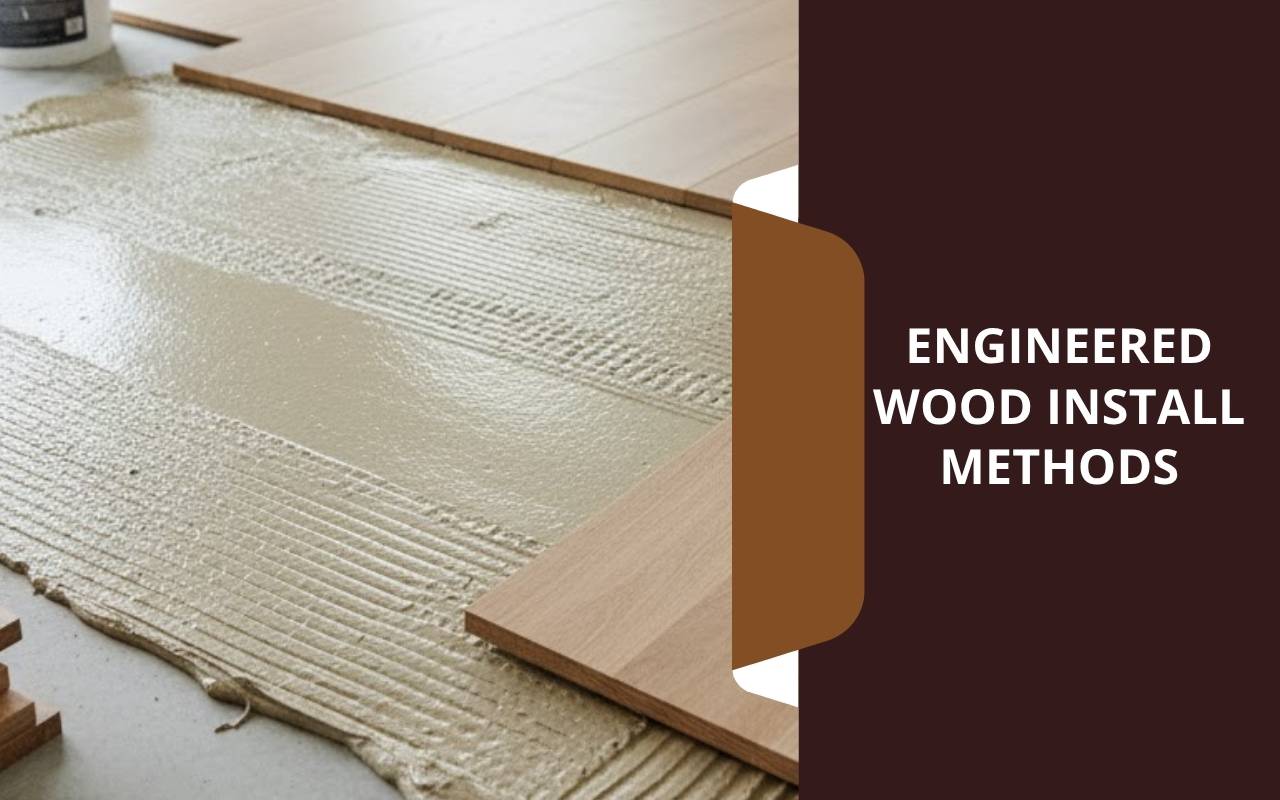
Engineered Wood Install Methods
Explore how Engineered Wood Installation blends real wood beauty with modern strength. This guide explains options in clear steps and plain language.
We cover the best installation on slab, glue vs nail engineered wood, floating floor benefits, and underlayment for engineered. Learn what fits your home and budget.
Benefits of Engineered Wood Flooring
Engineered wood brings hardwood looks with improved stability. It handles moisture swings better than solid wood, so rooms stay calm and quiet.
Wide species and finishes for any style.
Faster, cleaner jobs with less mess.
Often more affordable than premium solid wood.
Greener sourcing and smart use of materials.
Many projects start with a quick check of Flooring Services to plan the scope and timing.
Install on Slab: Process and Considerations
Concrete must be clean, dry, and level. A tested moisture barrier protects planks and helps ensure a lasting result.
Test moisture and fix issues first.
Use a quality adhesive rated for concrete.
Keep expansion gaps around all walls.
Wipe excess glue before it cures.
This is often the best install on slab in damp areas. The floor feels solid underfoot and resists movement.
Glue Installation Method: Pros and Cons
Glue bonds planks to the base for a firm, quiet feel. It also lowers noise between floors.
It can be messy and slower. Repairs are harder. Use moisture-resistant glue where needed. When comparing glue vs nail engineered wood, glue offers stability with more prep.
Nail Installation Method: Advantages and Limitations
Nailing is fast on wood subfloors. Boards are simpler to replace later, and the floor feels traditional and comfortable.
It does not work over concrete. The subfloor must be level and strong to avoid squeaks or gaps.
Importance of Underlayment in Engineered Wood Installation
Underlayment smooths small subfloor flaws and adds warmth. It also cuts noise in busy areas.
Choose thickness that matches your method.
Look for sound control where noise matters.
Pick a type with a vapor barrier for concrete.
Confirm compatibility with your adhesive or click system.
Select the right underlayment for engineered floors to improve comfort and long-term performance.
Exploring Floating Floors: Definition and Features
Floating planks click together and rest on underlayment. They work over concrete, tile, or existing wood.
Among the floating floor benefits is free movement with climate changes. Click-lock edges keep rows tight while gaps let the floor breathe.
Easy Installation Process of Floating Floors
Roll out underlayment and trim to fit. Start in a corner and click rows together, staggering seams.
Add trims to cover gaps. Many rooms finish in a day. This is one of the fastest Engineered Wood Installation methods.
Flexibility of Floating Floors Compared to Solid Wood
Floating systems adapt to humidity and temperature swings. Solid wood can warp or split in those changes.
You can place floating floors over vinyl or tile. When styles change, lift planks and replace them with minimal waste.
Ensuring Resilience in Your Flooring Choice
Resilience means handling daily traffic and spills. Glue gives a firm bond; floating allows natural movement.
Protect surfaces with rugs and felt pads. With smart prep and care, Engineered Wood Installation stays beautiful for years.
Frequently Asked Questions
Is Engineered Wood Installation good for basements?
Yes, with moisture checks, a barrier, and the right method. Floating or glue-down often work best.
What underlayment for engineered floors should I pick?
Match subfloor and method. On concrete, use a vapor barrier. For noise, choose higher sound ratings.
Which is better: glue vs nail engineered wood?
Glue feels firmer and quieter. Nailing is faster on wood subfloors and easier to repair.
Can I install over existing tile?
Yes. Floating systems often go over flat tile. Check height transitions and doors.
How do I maintain the new floor?
Sweep often and damp mop as directed. Use felt pads and rugs at entries.
Choosing the Best Install Method for Your Home
Match method to subfloor, moisture, and lifestyle. Choose the Engineered Wood Installation that fits your space and future plans.
Need help planning? Explore our Flooring Services or Contact Us for a tailored quote.